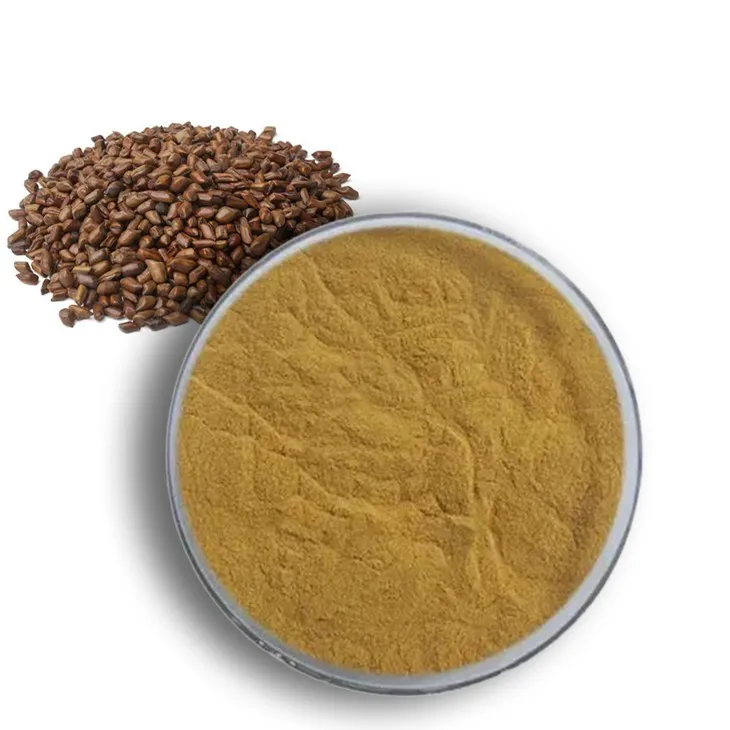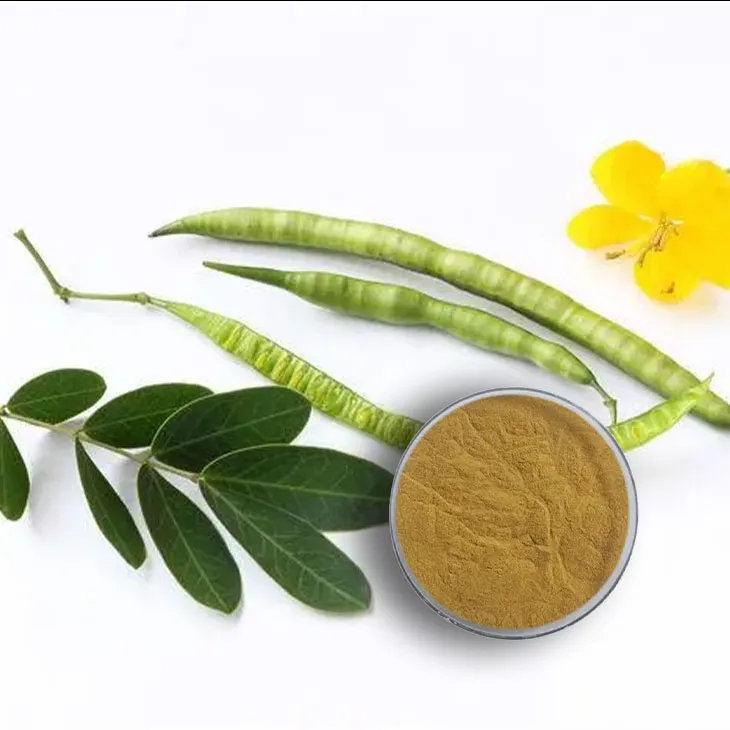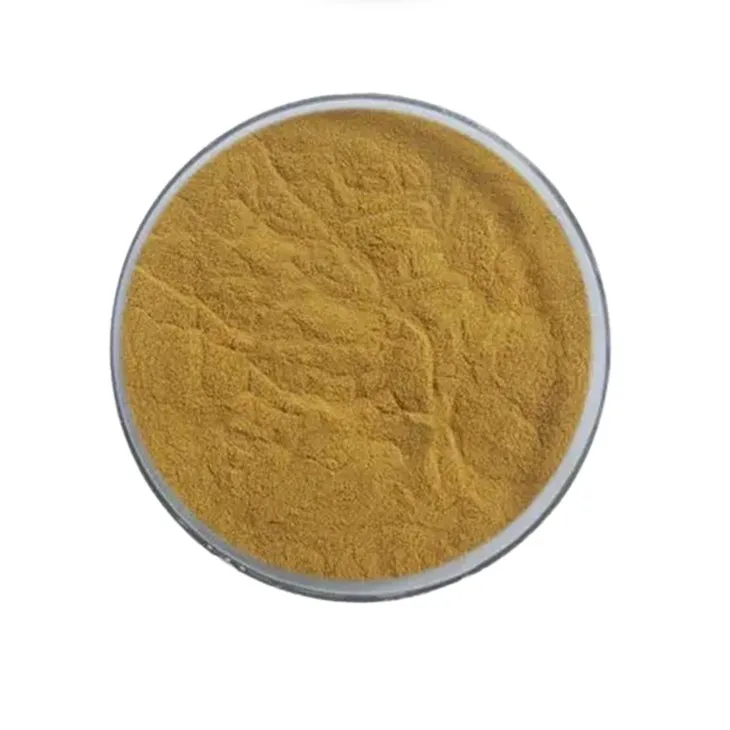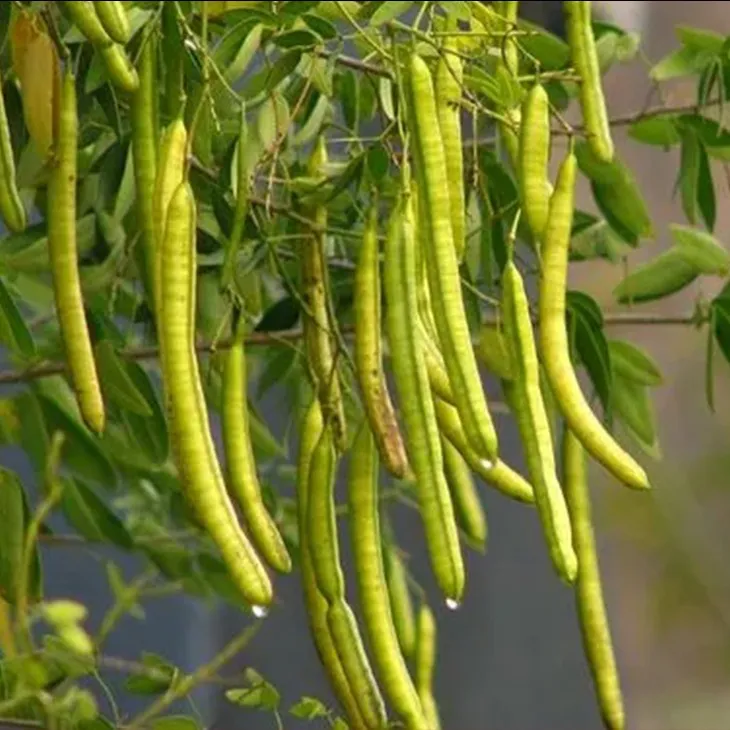- 0086-571-85302990
- sales@greenskybio.com
The Optimal Method for Extracting Cassia Seed Extract.
2024-11-30

1. Introduction
Cassia obtusifolia L., also known as Chinese senna, has been widely used in traditional medicine in many Asian countries for centuries. The Cassia seed is rich in various active components, especially anthraquinones, which possess potential pharmacological activities such as laxative, antioxidant, and anti - inflammatory effects. Therefore, extracting high - quality Cassia Seed Extract has great significance for its application in medicine, health products, and cosmetics.

2. Solvent Extraction
2.1 Principle
Solvent extraction is one of the most traditional extraction methods. It is based on the principle that the active components in Cassia seeds are soluble in certain solvents. Commonly used solvents include ethanol, methanol, and water. The solubility of different active components in solvents varies, and by selecting an appropriate solvent, the target active components can be dissolved and separated from the raw materials.
2.2 Procedure
- First, the Cassia seeds are dried and ground into a fine powder to increase the surface area for better solvent penetration.
- Then, the powdered Cassia seeds are soaked in the selected solvent at a certain ratio (e.g., 1:10, w/v). The soaking time usually ranges from several hours to days, depending on the nature of the components to be extracted.
- After soaking, the mixture is filtered to separate the liquid extract from the solid residue. The filtrate contains the dissolved active components.
- Finally, the solvent in the filtrate can be removed by evaporation under reduced pressure or other drying methods to obtain the Cassia Seed Extract.
2.3 Advantages
- Simplicity: It is a relatively simple and easy - to - operate method. The equipment required is not very complicated, and it can be carried out in a general laboratory or even on a small - scale production line.
- Wide Applicability: Different solvents can be selected according to the solubility characteristics of different active components, which makes it possible to extract a variety of components from Cassia seeds.
2.4 Disadvantages
- Long Extraction Time: As mentioned above, the soaking time can be relatively long, which may lead to degradation of some active components during the extraction process.
- Low Selectivity: It is difficult to selectively extract a specific active component, and usually a mixture of components is obtained. This may require further purification steps in subsequent processes.
- Solvent Residue: There may be solvent residue in the final extract, especially when using organic solvents. Solvent residue may have an impact on the quality and safety of the extract, especially when it is used in the fields of medicine and health products.

3. Ultrasonic - Assisted Extraction
3.1 Principle
Ultrasonic - assisted extraction utilizes ultrasonic waves to enhance the extraction process. When ultrasonic waves are applied to the solvent - Cassia seed mixture, cavitation bubbles are generated. These bubbles collapse violently, creating local high - pressure and high - temperature regions. This physical effect can disrupt the cell walls of Cassia seeds more effectively, increasing the mass transfer rate of active components from the interior of the cells to the solvent.
3.2 Procedure
- The Cassia seeds are prepared in the same way as in solvent extraction, that is, dried and ground into a powder.
- The powdered Cassia seeds are placed in a container with the selected solvent, and an ultrasonic generator is used to apply ultrasonic waves. The ultrasonic frequency, power, and treatment time are important parameters that need to be optimized. For example, the ultrasonic frequency may be in the range of 20 - 50 kHz, the power can be adjusted according to the volume of the sample, and the treatment time usually ranges from 15 minutes to several hours.
- After ultrasonic treatment, the mixture is filtered to obtain the liquid extract, and the solvent is removed as in solvent extraction to get the final Cassia Seed Extract.
3.3 Advantages
- Reduced Extraction Time: Compared with solvent extraction, ultrasonic - assisted extraction can significantly shorten the extraction time. The cavitation effect can accelerate the release of active components, so that the extraction can be completed in a relatively short time.
- Higher Efficiency: The disruption of cell walls by ultrasonic waves can improve the extraction efficiency, resulting in a higher yield of active components in the extract.
3.4 Disadvantages
- Equipment Requirement: Special ultrasonic equipment is required, which may increase the cost of the extraction process, especially for large - scale production.
- Uniformity Problem: Ensuring the uniformity of ultrasonic treatment in a large - volume sample can be a challenge. Inhomogeneous ultrasonic treatment may lead to inconsistent extraction results in different parts of the sample.

4. Supercritical Fluid Extraction
4.1 Principle
Supercritical fluid extraction uses supercritical fluids as the extraction medium. A supercritical fluid is a substance that is above its critical temperature and critical pressure. Carbon dioxide (CO₂) is the most commonly used supercritical fluid in the extraction of Cassia seed extract because it has moderate critical parameters (critical temperature is 31.1 °C, critical pressure is 7.38 MPa), is non - toxic, non - flammable, and has good solubility for many organic substances. In the supercritical state, CO₂ has the properties of both liquid and gas, which can penetrate into the matrix of Cassia seeds and dissolve the target active components effectively.
4.2 Procedure
- The Cassia seeds are pretreated, usually dried and ground into an appropriate particle size.
- The pretreated Cassia seeds are placed in the supercritical fluid extraction device. The system is then pressurized and heated to make CO₂ reach the supercritical state. The extraction pressure, temperature, and extraction time are important operating parameters. For example, the extraction pressure may range from 10 - 30 MPa, the temperature can be set between 40 - 60 °C, and the extraction time usually lasts from 30 minutes to a few hours.
- After extraction, the supercritical CO₂ is depressurized and the extract is collected. Since CO₂ is a gas at normal pressure and temperature, it can be easily removed from the extract, leaving a relatively pure Cassia seed extract.
4.3 Advantages
- High Selectivity: Supercritical fluid extraction can achieve relatively high selectivity for specific active components. By adjusting the extraction parameters such as pressure and temperature, different components can be selectively extracted, which is very beneficial for obtaining high - purity active components.
- No Solvent Residue: Since the supercritical fluid can be completely removed after extraction, there is no solvent residue in the final extract. This is very important for the application of the extract in the fields of medicine, health products, and cosmetics.
- Environmentally Friendly: CO₂ is a natural gas, and its use as a supercritical fluid is relatively environmentally friendly compared with organic solvents used in solvent extraction.
4.4 Disadvantages
- High Equipment Cost: The supercritical fluid extraction equipment is complex and expensive, which limits its application in small - scale production or laboratories with limited budgets.
- Operating Complexity: The operation of supercritical fluid extraction requires strict control of parameters such as pressure and temperature. Any deviation may affect the extraction results, so it requires well - trained operators.

5. Comparison of Different Extraction Methods
| Extraction Method | Advantages | Disadvantages | Efficiency for Anthraquinone Extraction |
|---|---|---|---|
| Solvent Extraction | Simple, wide applicability | Long extraction time, low selectivity, solvent residue | Moderate |
| Ultrasonic - Assisted Extraction | Reduced extraction time, higher efficiency | Equipment requirement, uniformity problem | High |
| Supercritical Fluid Extraction | High selectivity, no solvent residue, environmentally friendly | High equipment cost, operating complexity | Very high |
6. Conclusion
Each of the extraction methods for Cassia seed extract, namely solvent extraction, ultrasonic - assisted extraction, and supercritical fluid extraction, has its own characteristics. If cost and simplicity are the main considerations, solvent extraction may be a choice. However, for high - efficiency extraction with better quality control, ultrasonic - assisted extraction is more suitable. For applications that require high - purity extracts without solvent residue, supercritical fluid extraction is the optimal method, despite its high cost and operating complexity. The choice of extraction method should be based on the specific requirements of the end - use products, such as medicine, health products, or cosmetics, as well as the scale of production and economic factors.
FAQ:
What are the main extraction techniques for Cassia seed extract?
There are mainly solvent extraction, ultrasonic - assisted extraction, and supercritical fluid extraction. Solvent extraction is a traditional method that uses solvents to dissolve the active components from Cassia seeds. Ultrasonic - assisted extraction utilizes ultrasonic waves to enhance the extraction efficiency. Supercritical fluid extraction uses supercritical fluids, which have unique properties for extraction.
What are the advantages of solvent extraction for Cassia seed extract?
The advantages of solvent extraction include its simplicity and wide availability of solvents. It is a well - established method, and different solvents can be chosen based on the solubility of the target components. For example, some solvents may be good at dissolving anthraquinones in Cassia seeds. However, it may also have some disadvantages such as the potential for solvent residues and relatively long extraction times in some cases.
How does ultrasonic - assisted extraction improve the extraction of Cassia seed extract?
Ultrasonic - assisted extraction improves the extraction in several ways. The ultrasonic waves create cavitation bubbles in the solvent - Cassia seed mixture. When these bubbles collapse, they generate intense local shockwaves and micro - jets, which can break the cell walls of Cassia seeds more effectively, allowing the active components to be released more easily into the solvent. This leads to a shorter extraction time and potentially higher extraction yields compared to traditional solvent extraction alone.
What are the key features of supercritical fluid extraction for Cassia seed extract?
Supercritical fluid extraction has some key features. Supercritical fluids, such as carbon dioxide, have properties between a gas and a liquid at supercritical conditions. They have high diffusivity, low viscosity, and can penetrate into the matrix of Cassia seeds more easily. This can result in more efficient extraction of active components. Also, the supercritical fluid can be easily removed from the extract, leaving little or no residue, which is very important for applications in medicine, health products, and cosmetics.
Which extraction method is most suitable for obtaining anthraquinones from Cassia seeds?
Each extraction method has its own characteristics in obtaining anthraquinones from Cassia seeds. Solvent extraction can be effective if the right solvent is chosen, but it may have issues with solvent residues. Ultrasonic - assisted extraction can enhance the extraction efficiency of anthraquinones. Supercritical fluid extraction, especially with supercritical carbon dioxide, may be a very good option as it can provide a clean extract with high - quality anthraquinones and is suitable for applications in medicine and cosmetics where purity is crucial. However, the choice also depends on factors such as cost, scale of production, and available equipment.
Related literature
- Efficient Extraction of Active Components from Cassia Seeds: A Comparative Study of Different Extraction Methods"
- "Optimization of Solvent Extraction for Cassia Seed Extract and Its Application in Health Products"
- "The Role of Ultrasonic - Assisted Extraction in Obtaining High - Quality Cassia Seed Extract"
- "Supercritical Fluid Extraction of Cassia Seeds: Towards a Green and Efficient Process"
- ▶ Hesperidin
- ▶ Citrus Bioflavonoids
- ▶ Plant Extract
- ▶ lycopene
- ▶ Diosmin
- ▶ Grape seed extract
- ▶ Sea buckthorn Juice Powder
- ▶ Fruit Juice Powder
- ▶ Hops Extract
- ▶ Artichoke Extract
- ▶ Mushroom extract
- ▶ Astaxanthin
- ▶ Green Tea Extract
- ▶ Curcumin
- ▶ Horse Chestnut Extract
- ▶ Other Product
- ▶ Boswellia Serrata Extract
- ▶ Resveratrol
- ▶ Marigold Extract
- ▶ Grape Leaf Extract
- ▶ New Product
- ▶ Aminolevulinic acid
- ▶ Cranberry Extract
- ▶ Red Yeast Rice
- ▶ Red Wine Extract
-
Agaricus Blazei Extract
2024-11-30
-
Phellodendron Extract
2024-11-30
-
Soy Extract
2024-11-30
-
Uridine-5'-monophosphate Disodium salt
2024-11-30
-
Nettle leaf extract
2024-11-30
-
Curcumin Extract
2024-11-30
-
Lotus leaf extract
2024-11-30
-
Rose Hip Extract
2024-11-30
-
Thunder God Vine Extract
2024-11-30
-
Peppermint Oil
2024-11-30





















